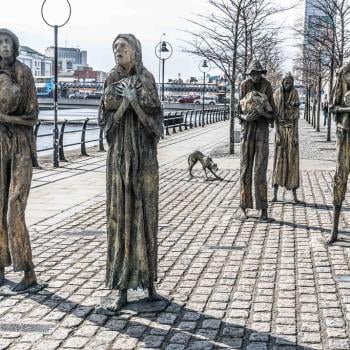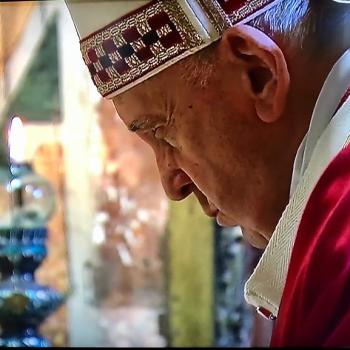By Sarah Gottfried
 And what is it to cease breathing, but to free the breath from its restless tides, that it may rise and expand and seek God unencumbered? -- Kahlil Gibran
And what is it to cease breathing, but to free the breath from its restless tides, that it may rise and expand and seek God unencumbered? -- Kahlil Gibran
I used to plan my funeral like other people plan their weddings, taking notes at other funerals, choosing songs and readings and prayers, flowers and food, my best pictures for a slide show or video. I finally stopped planning on a frigid January car ride in Minnesota ten years ago. Sandwiched between friends, I was explaining the details I had carefully thought out ever since attending my first funeral at age eleven, nine years earlier.
I wasn't dying or sick but between ages eleven and twenty I had been to several funerals of friends' siblings or their parents and one funeral of a good friend who had passed the previous July. One friend listened patiently and attentively and very lovingly asked, "You know funerals are for the living, right? You're not there, and you don't know what people will need to move through their grief. They get to decide." All that time I had thought my funeral was a spiritual send-off, assisting my ascension. But my friend was right. So how do we, the living, spiritually support those nearing their transition into the afterlife and prepare for our own?
Two years ago while sitting bedside as my grandmother was dying, I wanted to help her by using my skills as a massage therapist. She had helped me pay for a car so I could get to school and since then I had only had one opportunity to give her a massage. She had gotten sicker and was now actively dying. I had gone to school knowing I would want to work with people in hospice. I had also sat with several others who were in end-stage AIDS as part of my care giving job. I wanted to use my experience and education to help ease and support my grandmother's transition.
But it didn't work; she was no longer verbally communicative except to yell in pain at any light touch. I tried reading to her poems by Mary Oliver in the middle of the night, and when she seemed agitated, I switched to a newer Mary Oliver book that focused less on celebrating the earthly wonders and more on the beyond and unknown. Sitting there I knew something important was happening, something sacred and maybe not as exciting and beautiful as birthing a baby, but certainly as poignant. I felt at a loss for what I could do to help her shed this body and move into what is next. My biggest struggle was that I felt compelled to know what to do and to fix the problem, forgetting that spiritual assistance begins and ends with just being.
Those who are lucky enough to be enrolled in hospice receive care from a team of doctors, nurses, social workers, counselors, home health aides, and volunteers (and hopefully soon massage therapists and music and pet therapists will become permanent team members). The hospice concept has its origin in the crusades where monasteries offered respite for tired travelers. Today, pain management and comfort care are the primary goals of hospice. Though I've worked with many dedicated and compassionate hospice teams as a caregiver, I still wonder if there is more we can do for our dying. Lately I've been considering studying to become a hospice chaplain, but I don't even know if that is it either. What I want to know is how to be Mary Magdalene, who lovingly stayed with Jesus as he died.
My search for a guide on how to embody Mary Magdalene ended this past fall with the release of The Art of Death Midwifery, by Joellyn St. Pierre. It is an invitation to learn to spiritually assist and guide the dying, to bear another's burdens as he or she makes the transition from this life into the afterlife. Though death marks an end to this life and body, there is birthing that takes place into our next existence. A death midwife is called to this act of service and with discipline builds a practice of meditation and prayer in order to become an unconditionally loving witness to another's death.
The author writes about hearing a minister speak at a funeral about Mary Magdalene and that she "loved Jesus enough to watch him die. That's what death midwives do; we love people enough to watch them die." She defines death midwifery as "a profound and intuitive way of communing with the dying, of lending support and guidance to those making this greatest of transitions" and does so by creating "a sacred space using music, voice, meditation, guided imagery and inspiration." The book describes more details about building your own practice of meditation and prayer and how to create the sacred space and provide unconditional love in service to those who are actively dying.




